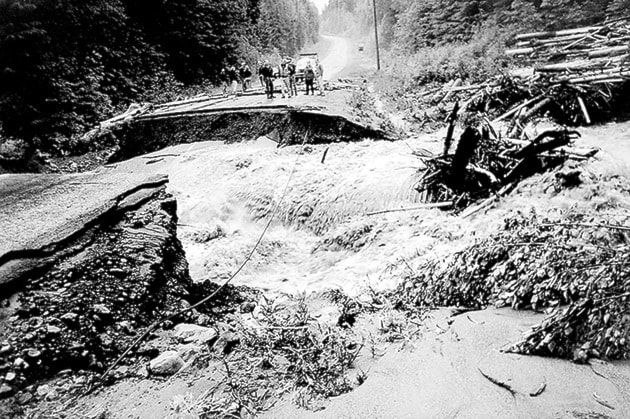Editor, The Times:
I wonder how many local residents who enjoy hiking or skiing on Trophy Mountain are aware that the area is being threatened by logging near the boundaries of Wells Gray Park.
Canfor applied for a permit in September 2016 to clearcut 32 hectares of the western slope of Trophy Mountain. The Ministry of Forests approved the permit in December and logging is expected to start when the snow melts.
Last week, Canfor applied for 10 more permits for clearcuts in the same area. These are presently being reviewed by the Ministry of Forests.
Clearwater Valley residents including myself who live below Trophy Mountain are very worried about the impact of these clearcuts on our water supplies. There are 23 mapped creeks in the proposed logging area and residents hold 43 water licences for domestic and irrigation water supplies. In addition, I have a licence for independent power production for BC Hydro. Water from surface drainage and private wells is critical to the livelihood of the people who live along Clearwater Valley Road.
It has been well documented that, with the forest cover removed, there is rapid snowmelt and runoff, leaving depleted or dry creeks and wells in the fall.
Between 1978 and 1987, logging created a gigantic clearcut of 540 hectares on the southwest side of Trophy Mountain. Streams flowing off the mountain such as Spahats, Grouse and the three Canyon Creeks were all affected in later years.
On July 11, 1997, two days of relentless rain turned the usually tiny stream of First Canyon into a rampaging torrent. The culvert could not handle all the debris and water, and quickly washed out. Within a few hours, the flood created a new canyon which measured 40 metres deep and the road to Wells Gray Park was severed. About 260 people, including tourists and residents, were stranded for five days while a temporary bridge was built across the new canyon.
Two years later, a similar flood occurred on Spahats Creek and again washed out the road, stranding about 350 people for two days.
In 2001, a flood on Grouse Creek destroyed its bridge. In later years, Second Canyon Creek and Fage Creek nearly washed out the highway which was closed for safety.
All these floods on Clearwater River tributaries were blamed on the 1980s logging on Trophy Mountain. The BC government has spent about $11 million building replacement bridges and carrying out emergency evacuations of stranded people.
Because of the history of previous disruptions, Clearwater Valley residents believe it could happen again if the Ministry of Forests approves new logging permits for Canfor.
After a three-year process beginning in 1996, an agreement known as "The Guiding Principles for the Management of Land and Resources in the Upper Clearwater Valley" was reached between the Ministry and residents. They agreed to three woodlots in exchange for restrictions on Crown Land logging to small discreet incursions for removal of insect-killed trees. This document was signed by the District Manager of Forests in 2000.
When Canfor announced in 2012 that they intended to log Trophy Mountain, the Referral Group committee was called into session and four years of meetings followed, attended by residents and representatives from Ministry of Forests and Canfor. Concerns were expressed not only about the stream flows, but many other issues such as stability of the steep slopes of Trophy Mountain, the proposed UNESCO Geo Park status for Wells Gray Park, the effect on the $20 million annual tourism industry, and the dwindling habitat of the endangered Mountain Caribou that roams in the proposed logging area.
All these meetings seemed to be fruitless in December 2016 when the Ministry of Forests ignored the Guiding Principles and issued the first permit to Canfor to start industrial logging on Trophy Mountain.
Your readers may be interested in a new website that has been set up by the Wells Gray Gateway Protection Society – www.protectwellsgray.ca. The “Take Action” tab has a list of many politicians to whom letters can be directed expressing concerns about the Trophy Mountain logging.
Roland Neave
Kamloops, B.C.
